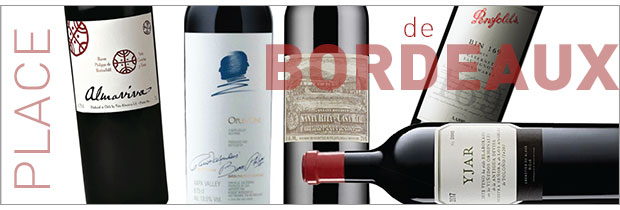Press
International wines take over the Bordeaux marketplace
For several years now, the Bordeaux market has been opening its arms wide to the great French and international wines that are anxious to control their world distribution while finding a particular echo with the critics and the marketers. A Copernican revolution in a way, since this intangible hand regulates the markets through a clever mix of relationships between local brokers and local merchants and is no longer entirely devoted to the great classified growths of Bordeaux and similar.
In the beginning, there were mainly alliances between Bordeaux families and families known and recognised throughout the world. Emblematic of this evolution, the joint venture between the Rothschild family (Mouton branch) and the Californian Mondavi family to create Opus One has resulted, since the 2001 vintage marketed in 2004, in the marketing of part of the production by a few Aquitaine merchants thanks to its Bordeaux office, without however going through brokers. Similarly, Almaviva, the other international joint venture of the Rothschild family, this time in Chile with Concha y Toro, was marketed entirely via the Bordeaux market from its first vintage, in 1998, as was Caiarossa, the Tuscan property of the Albada-Jelgersma family, owners of Château Giscours in Margaux, available via the Bordeaux market from its first vintage, in 2004.
EMERGENCE OF DEDICATED STRUCTURES
In recent years, the Bordeaux market has opened up to other non-Bordeaux brands and has become more organised. This wave seems to correspond to the creation of the structure. Excellence Vin – Grands Vins du Monde, directed by Jeremy Quievre (who did not wish to answer our questions) and accompanied by Laurent Quancard, a very influential broker on the Bordeaux market. This selection continues to grow and now represents around 400 different labels exchanged between merchants and 42 references marketed via the company, according to information on its website. The recent arrival of a new entity, Bureau des Grands Vins, directed by Timothée Moreau, should accelerate the movement. It must be said that the market seems to be buoyant, following the example of the company Joanne, a major wine merchant in Bordeaux, which last January created a company dedicated to the marketing of major international brands: Joanne Rare Wines. The management has been entrusted to Jean-Quentin Prats, son of Jean-Guillaume Prats, president of Domaines Barons de Rothschild (Lafi te). The Bordeaux model is atypical, because it is the only one that allows access to retailers throughout the world,” explains the manager. Each partner has between 10 and 100 customers. This structure allows us to obtain media and statutory visibility, and the winemaker can concentrate on his job of making great wines. Joanne is a heavyweight in the sector and to be distributed by them is to open up the field of possibilities. In 2020, it had nearly “1,000 distributor clients, including 300 in mainland China, which means an estimated 10,000 professional clients”, according to data provided by Jean-Quentin Prats. A significant coverage that favours trade and resale, especially as the wines “are rare, therefore more widely available, and therefore more desirable”, he adds.
“For some years now, the Bordeaux market has been opening up to other non-Bordeaux brands and getting organised.”
A NEW MODEL OF PLACE
However, the marketing of international wines follows a few different rules than their Bordeaux counterparts. Firstly, the brands create pools of merchants. The aim is not to be present through 50 or 80 different négociants, but rather 5 or 6 at the most. This pool then concentrates the business and controls the distribution, creating a form of scarcity. Thus, the wines marketed, in addition to being open to the whole world, experience a rapid craze and quickly show an increase in the order of 20 to 30%, the assurance of a successful marketing in a way, cutting the ground from under the feet of a more financial competitor and one that is specialised in the “second market”, i.e. speculative resale, the London market. “London is a major market, but it tends to specialise in second-hand trading. Bordeaux wants to become the world reference for direct marketing of estates,” suggests Jean-Quentin Prats. A subtle, but very effective way of changing the centre of gravity of wine resale through a more pragmatic control of brand distribution. The success is there. This year, no less than five new properties have been announced: Yjar, the first Rioja wine to be marketed via the Bordeaux marketplace and made by Telmo Rodriguez; Penfolds 2018 Bin 169 Coonawarra cabernet sauvignon; Beaux Frères, the former property of Robert Parker and his brother-in-law, now owned by the Henriot group; Philipponnat, which will be the first champagne house to join the Bordeaux marketplace with two vintages including its Clos des Goisses; and, most recently, Chilean producer Santa Rita, which has just confirmed that its premium Casa Real Reserva Especial will be marketed via Bordeaux for the European, Asian and Canadian markets, with the exception of the US and South America. And where do the Bordeaux châteaux stand in all this? For the moment, they are watching. While some have made their disagreement known, it seems that the purchase of international properties marketed via the Bordeaux marketplace has dampened previously vehement and now more lenient opinions. It is true that the craze for the Bordeaux marketplace should act as a positive effect on the whole sector, and therefore on the great classified growths.
Source: V & S NEWSPublication date: 15 October 2021Link: https://www.vsnews.fr/documentation/marches



